American Political System The Range of the

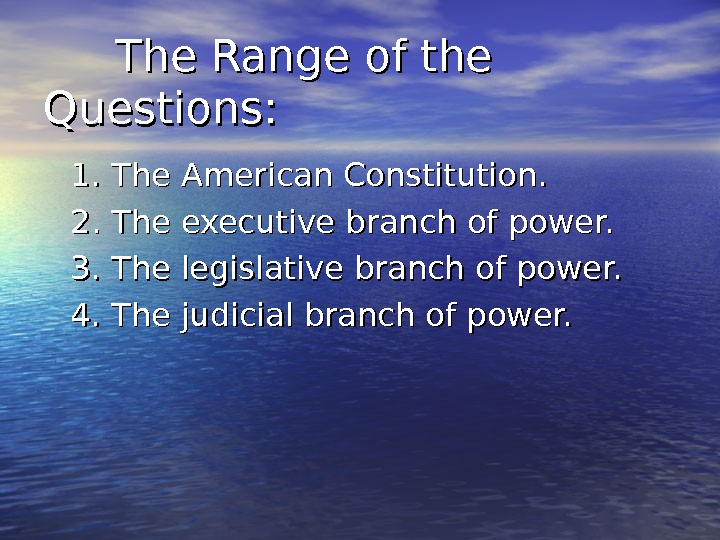
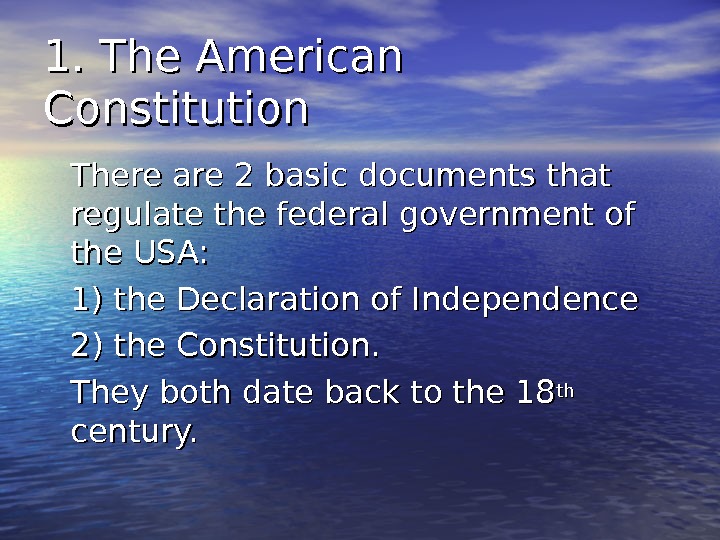


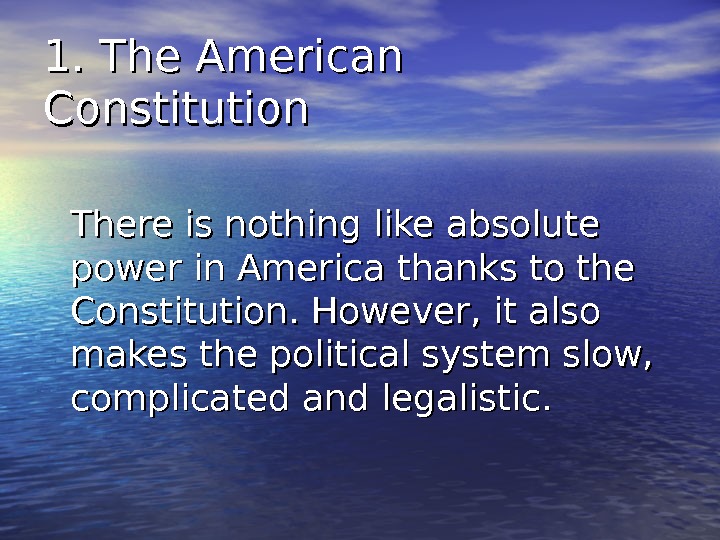
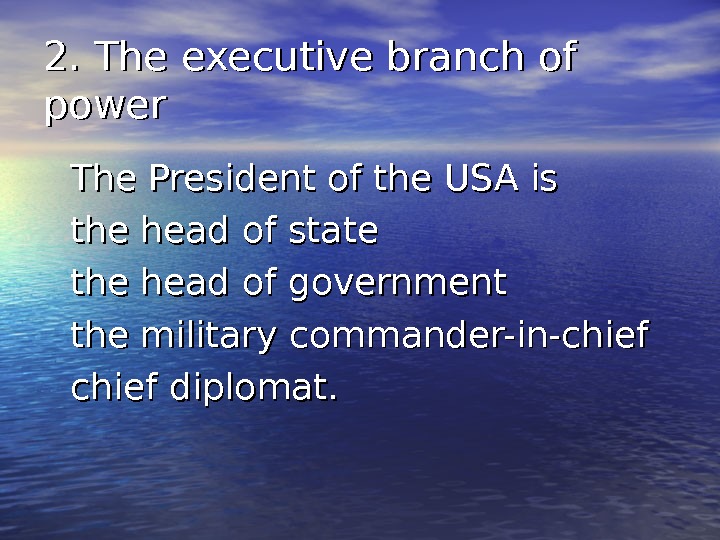
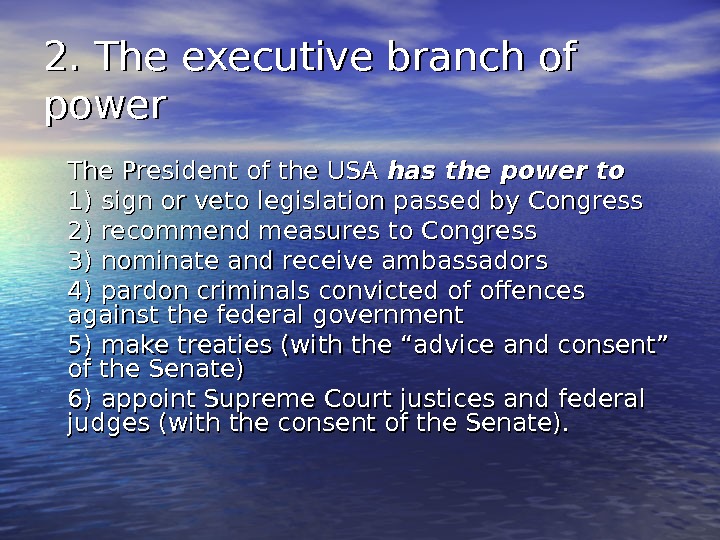
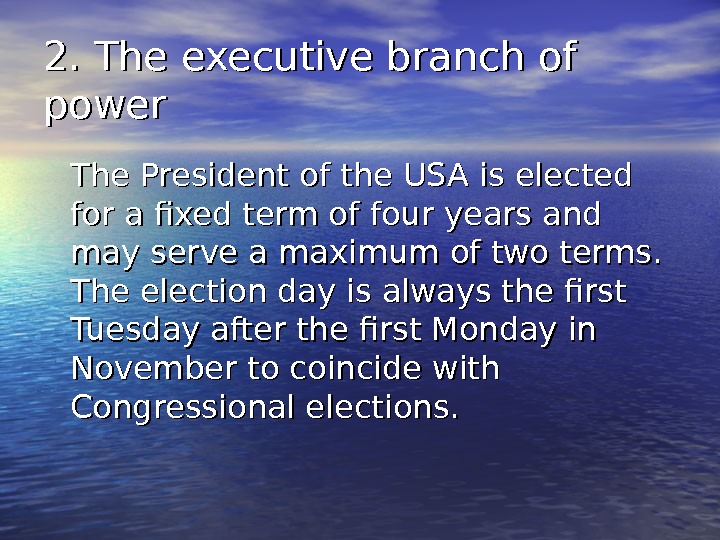

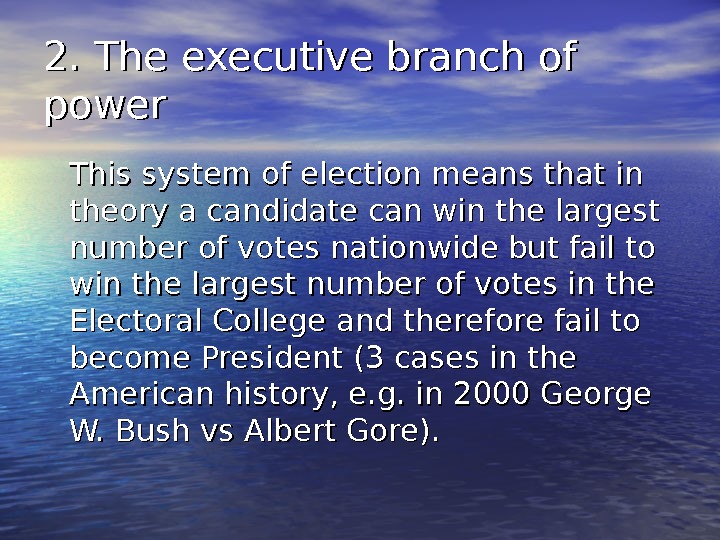
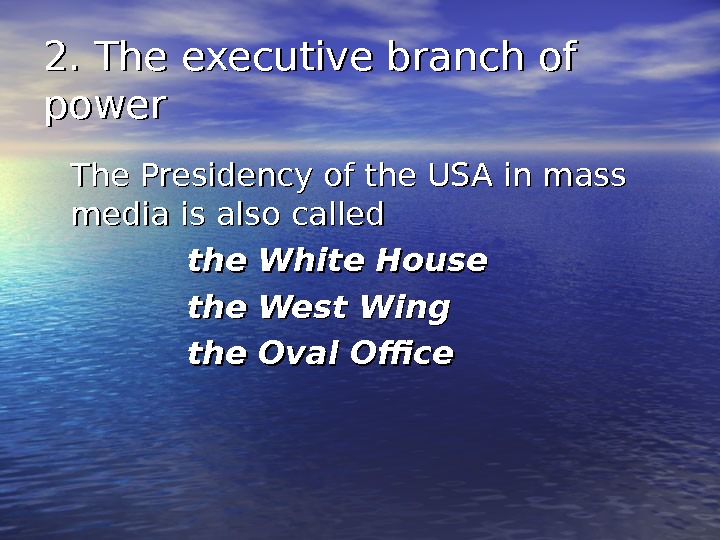
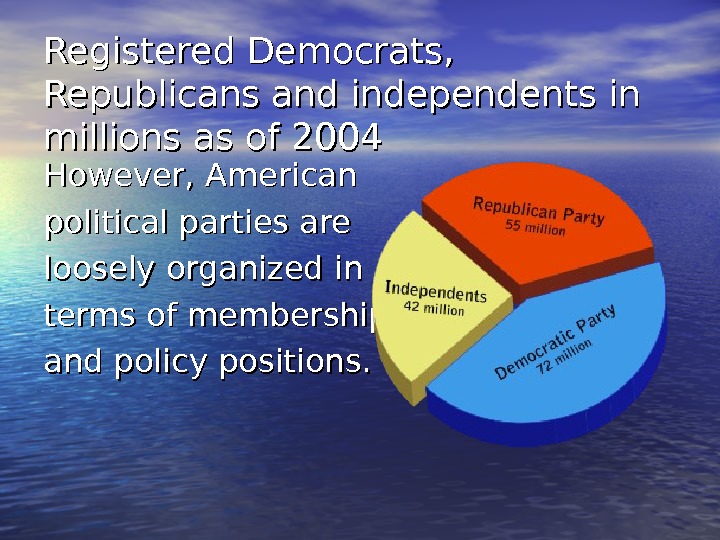

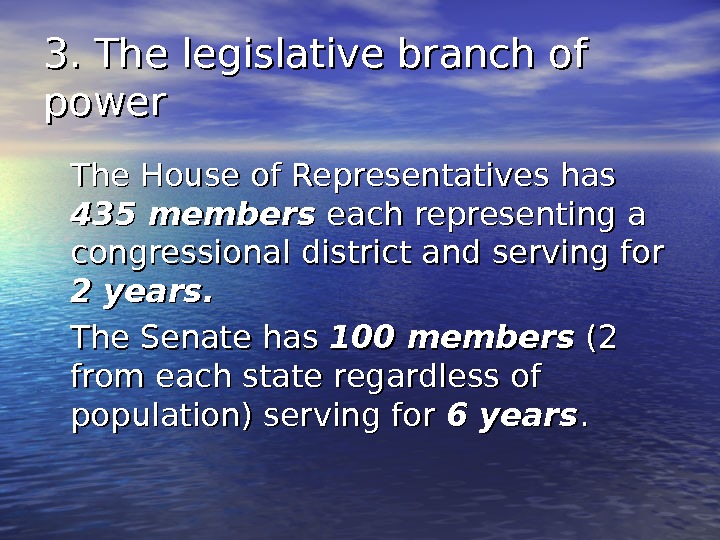

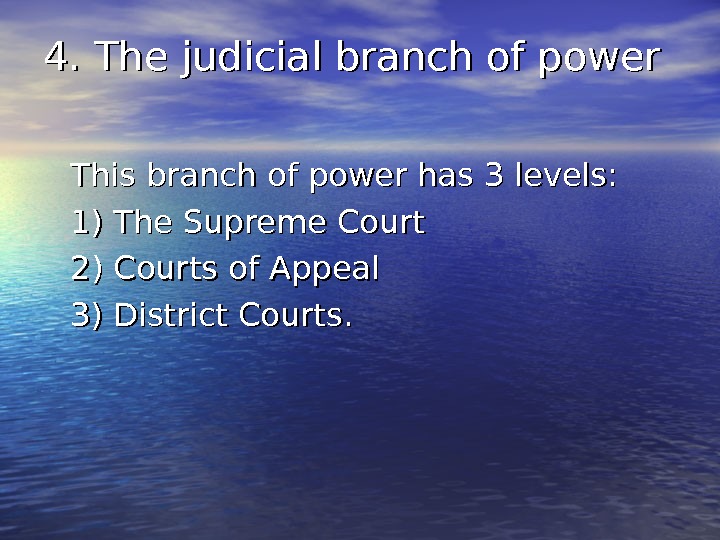
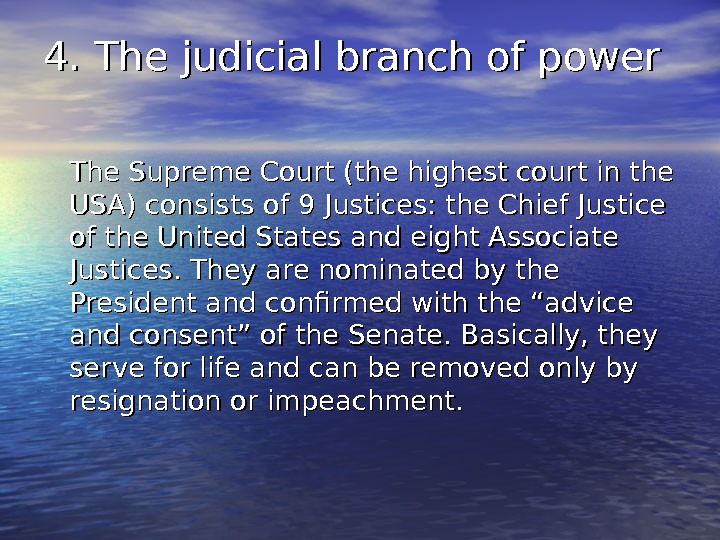
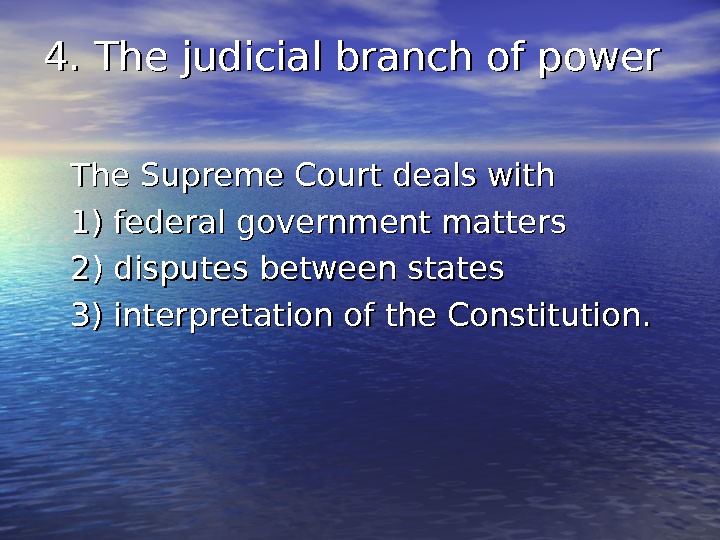


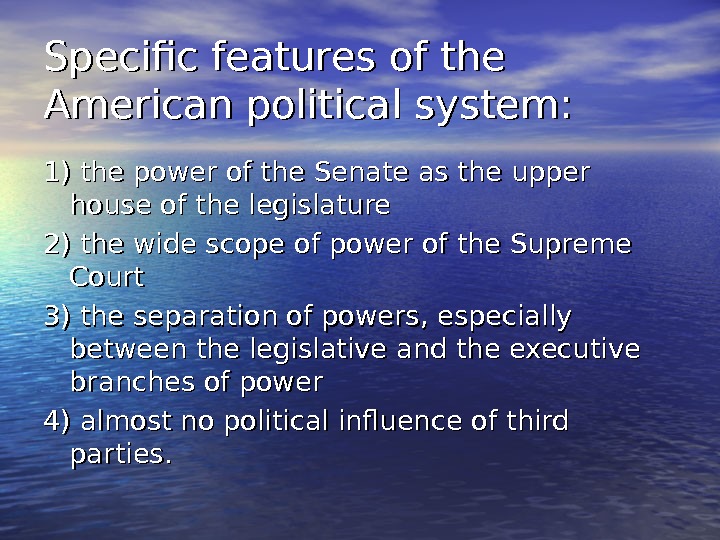

- Размер: 166.5 Кб
- Количество слайдов: 23
Описание презентации American Political System The Range of the по слайдам
 American Political System
American Political System
 The Range of the Questions: 1. The American Constitution. 2. The executive branch of power. 3. The legislative branch of power. 4. The judicial branch of power.
The Range of the Questions: 1. The American Constitution. 2. The executive branch of power. 3. The legislative branch of power. 4. The judicial branch of power.
 1. The American Constitution There are 2 basic documents that regulate the federal government of the USA: 1) the Declaration of Independence 2) the Constitution. They both date back to the 18 thth century.
1. The American Constitution There are 2 basic documents that regulate the federal government of the USA: 1) the Declaration of Independence 2) the Constitution. They both date back to the 18 thth century.
 1. The American Constitution The main principle of the American Constitution is separation of powers , or, in other words, checks and balances. . No institution has too much power and no individual can be a member of more than one institution.
1. The American Constitution The main principle of the American Constitution is separation of powers , or, in other words, checks and balances. . No institution has too much power and no individual can be a member of more than one institution.
 1. The American Constitution The members of each branch of power are granted by the Constitution different terms of office , e. g. the President – 4 years members of the Senate – 6 years members of the House of Representatives – 2 years members of the Supreme Court – for life.
1. The American Constitution The members of each branch of power are granted by the Constitution different terms of office , e. g. the President – 4 years members of the Senate – 6 years members of the House of Representatives – 2 years members of the Supreme Court – for life.
 1. The American Constitution There is nothing like absolute power in America thanks to the Constitution. However, it also makes the political system slow, complicated and legalistic.
1. The American Constitution There is nothing like absolute power in America thanks to the Constitution. However, it also makes the political system slow, complicated and legalistic.
 2. The executive branch of power The President of the USA is the head of state the head of government the military commander-in-chief diplomat.
2. The executive branch of power The President of the USA is the head of state the head of government the military commander-in-chief diplomat.
 2. The executive branch of power The President of the USA has the power to 1) sign or veto legislation passed by Congress 2) recommend measures to Congress 3) nominate and receive ambassadors 4) pardon criminals convicted of offences against the federal government 5) make treaties (with the “advice and consent” of the Senate) 6) appoint Supreme Court justices and federal judges (with the consent of the Senate).
2. The executive branch of power The President of the USA has the power to 1) sign or veto legislation passed by Congress 2) recommend measures to Congress 3) nominate and receive ambassadors 4) pardon criminals convicted of offences against the federal government 5) make treaties (with the “advice and consent” of the Senate) 6) appoint Supreme Court justices and federal judges (with the consent of the Senate).
 2. The executive branch of power The President of the USA is elected for a fixed term of four years and may serve a maximum of two terms. The election day is always the first Tuesday after the first Monday in November to coincide with Congressional elections.
2. The executive branch of power The President of the USA is elected for a fixed term of four years and may serve a maximum of two terms. The election day is always the first Tuesday after the first Monday in November to coincide with Congressional elections.
 2. The executive branch of power The President is not elected directly by the voters but by an Electoral College representing each state on the basis of a combination of the number of members in the Senate (two for each state regardless of size) and the number of members in the House of Representatives (roughly proportional to population).
2. The executive branch of power The President is not elected directly by the voters but by an Electoral College representing each state on the basis of a combination of the number of members in the Senate (two for each state regardless of size) and the number of members in the House of Representatives (roughly proportional to population).
 2. The executive branch of power This system of election means that in theory a candidate can win the largest number of votes nationwide but fail to win the largest number of votes in the Electoral College and therefore fail to become President (3 cases in the American history, e. g. in 2000 George W. Bush vs Albert Gore).
2. The executive branch of power This system of election means that in theory a candidate can win the largest number of votes nationwide but fail to win the largest number of votes in the Electoral College and therefore fail to become President (3 cases in the American history, e. g. in 2000 George W. Bush vs Albert Gore).
 2. The executive branch of power The Presidency of the USA in mass media is also called the White House the West Wing the Oval Office
2. The executive branch of power The Presidency of the USA in mass media is also called the White House the West Wing the Oval Office
 Registered Democrats, Republicans and independents in millions as of 2004 However, American political parties are loosely organized in terms of membership and policy positions.
Registered Democrats, Republicans and independents in millions as of 2004 However, American political parties are loosely organized in terms of membership and policy positions.
 3. The legislative branch of power The collective name for the legislative branch of power in America is Congress which consists of 2 chambers. American Congress is also called Capitol Hill or the Hill. The lower chamber is the House of Representatives, the upper chamber is the Senate.
3. The legislative branch of power The collective name for the legislative branch of power in America is Congress which consists of 2 chambers. American Congress is also called Capitol Hill or the Hill. The lower chamber is the House of Representatives, the upper chamber is the Senate.
 3. The legislative branch of power The House of Representatives has 435 members each representing a congressional district and serving for 2 years. The Senate has 100 members (2 (2 from each state regardless of population) serving for 6 years. .
3. The legislative branch of power The House of Representatives has 435 members each representing a congressional district and serving for 2 years. The Senate has 100 members (2 (2 from each state regardless of population) serving for 6 years. .
 3. The legislative branch of power The Senate must give ‘advice and consent’ to many important Presidential appointments.
3. The legislative branch of power The Senate must give ‘advice and consent’ to many important Presidential appointments.
 4. The judicial branch of power This branch of power has 3 levels: 1) The Supreme Court 2) Courts of Appeal 3) District Courts.
4. The judicial branch of power This branch of power has 3 levels: 1) The Supreme Court 2) Courts of Appeal 3) District Courts.
 4. The judicial branch of power The Supreme Court (the highest court in the USA) consists of 9 Justices: the Chief Justice of the United States and eight Associate Justices. They are nominated by the President and confirmed with the “advice and consent” of the Senate. Basically, they serve for life and can be removed only by resignation or impeachment.
4. The judicial branch of power The Supreme Court (the highest court in the USA) consists of 9 Justices: the Chief Justice of the United States and eight Associate Justices. They are nominated by the President and confirmed with the “advice and consent” of the Senate. Basically, they serve for life and can be removed only by resignation or impeachment.
 4. The judicial branch of power The Supreme Court deals with 1) federal government matters 2) disputes between states 3) interpretation of the Constitution.
4. The judicial branch of power The Supreme Court deals with 1) federal government matters 2) disputes between states 3) interpretation of the Constitution.
 4. The judicial branch of power The Supreme Court has much more political influence than the highest courts in European democracies, so the appointment of Justices is important and often controversial.
4. The judicial branch of power The Supreme Court has much more political influence than the highest courts in European democracies, so the appointment of Justices is important and often controversial.
 American exceptionalism: 1) no clear ideological division between the two major political parties. The USA has never had a credible socialist or anti-capitalist party. 2) the alleged superiority of the United States because of its history, size, wealth and global dominance. 3) the belief that God has especially chosen or blessed the country.
American exceptionalism: 1) no clear ideological division between the two major political parties. The USA has never had a credible socialist or anti-capitalist party. 2) the alleged superiority of the United States because of its history, size, wealth and global dominance. 3) the belief that God has especially chosen or blessed the country.
 Specific features of the American political system: 1) the power of the Senate as the upper house of the legislature 2) the wide scope of power of the Supreme Court 3) the separation of powers, especially between the legislative and the executive branches of power 4) almost no political influence of third parties.
Specific features of the American political system: 1) the power of the Senate as the upper house of the legislature 2) the wide scope of power of the Supreme Court 3) the separation of powers, especially between the legislative and the executive branches of power 4) almost no political influence of third parties.
 Political culture in America: There are several core beliefs shared by the vast majority of the population: 1) democracy (the government is answerable to citizens, they can change it through elections) 2) equality before the law (no special privilege to any citizen or government official) 3) freedom of religion and separation of church and state (the government neither supports nor suppresses religion) 4) freedom of speech (the society should be a marketplace of ideas).
Political culture in America: There are several core beliefs shared by the vast majority of the population: 1) democracy (the government is answerable to citizens, they can change it through elections) 2) equality before the law (no special privilege to any citizen or government official) 3) freedom of religion and separation of church and state (the government neither supports nor suppresses religion) 4) freedom of speech (the society should be a marketplace of ideas).
